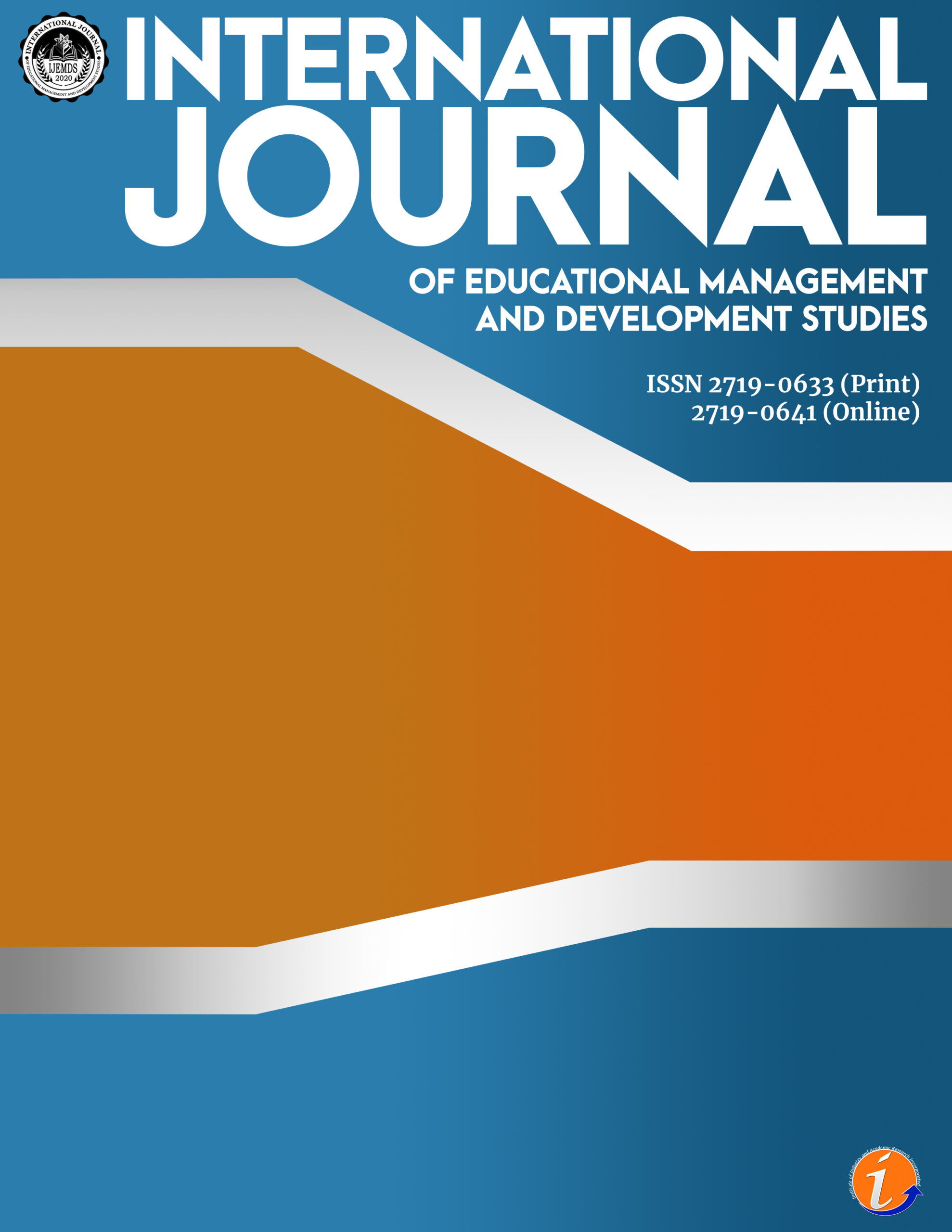This study aimed to establish a foundation for enhancing online learning experiences in higher education by evaluating service quality through the SERVQUAL framework. Specifically, it examined the gaps between students’ expectations and satisfaction across five dimensions: tangibles, reliability, responsiveness, assurance, and empathy. The study provided empirical insights to guide improvements in digital learning environments. An analytical research design, utilizing SERVQUAL gap analysis to assess online learning service quality was used. Data were collected through an online survey of 1,892 college students, measuring their perceived expectations and satisfaction with online learning modality. The paired sample t-test and Cohen’s d effect size analysis were used to quantify the significance of the gaps. The results indicated significant negative gaps across all five SERVQUAL dimensions (p < .001), confirming that online learning platforms fall short of students’ expectations. The largest gaps were observed in technological reliability, instructor responsiveness, and institutional support, suggesting systemic deficiencies in online education. These findings highlight the urgent need for infrastructure improvements, faculty training in digital pedagogy, and enhanced student support services. This study provides a data-driven foundation for improving online learning systems using SERVQUAL analysis, offering actionable insights for higher education institutions, policymakers, and educators to enhance the quality and effectiveness of digital learning environments.
SERVQUAL, online learning, higher education, service quality, gap analysis, student satisfaction
Eufrosina P. Mines. Corresponding author. EdD, VP for Academic Affairs and Research, Kolehiyo ng Pantukan. Email: eufrosina.mines@gmail.com
Albeb Q. Taray. MBA, Program Head, Kolehiyo ng Pantukan. Email: albeb94@gmail.com
Quennie A. Cunanan. PhD, Associate Professor, Kolehiyo ng Pantukan. Email: quenniecunanan@gmail.com
"All authors contributed equally to the conception, design, preparation, data gathering and analysis, and manuscript writing. All authors read and approved the final manuscript."
No potential conflict of interest was reported by the author(s).
This work was not supported by any funding.
The ethical review and approval were waived for this study.
AI tools were not used in writing this paper.
Arumugam, V., & Chandre, Dr. A. (2023). Problems and challenges faced by the students of government schools in Elearning. International Journal of Multidisciplinary Research & Reviews, 2(4), 19–28. https://doi.org/10.56815/ijmrr.v2i4.2023/19-28
Baria, K., & Gomez, D. (2022). Influence of social support to student learning and development. International Journal of Research Studies in Education, 11(2). https://doi.org/10.5861/ijrse.2022.112
Binder, M. (2024, April 3). 7 top challenges with online learning for students (and solutions). Thinkific. https://www.thinkific.com/blog/challenges-with-online-learning/
Bird, K. A., Castleman, B. L., & Lohner, G. (2022). Negative impacts from the shift to online learning during the COVID-19 crisis: Evidence from a statewide Community College System. AERA Open, 8. https://doi.org/10.1177/23328584221081220
Dangaiso, P., Makudza, F., & Hogo, H. (2022). Modelling perceived e-learning service quality, student satisfaction and loyalty. A higher education perspective. Cogent Education, 9(1). https://doi.org/10.1080/2331186x.2022.2145805
De Souza, R., Parveen, R., Chupradit, S., Velasco, L. G., Arcinas, M., Tabuena, A. C., Pentang, J. T., & Ventayen, R. J. M. (2021). Language teachers’ pedagogical orientations in integrating technology in the online classroom: Its effect on students motivation and engagement. Turkish Journal of Computer and Mathematics Education, 12(10), 5001-5014. https://dx.doi.org/10.2139/ssrn.3844678
Dugenio-Nadela, C., Cañeda, D. M., Tirol, S. L., Samillano, J. H., Pantuan, D. J., Piañar, J. C., Tinapay, A. O., Casas, H. M., Cometa, R. A., Conson, S. O., Urot, M. V., Ancot, J. M., Nadela, R. L., Dugenio-Terol, I., Baluyot, A. M., Pevida, K., Olivar, J. I., & Decena, E. (2023). Service quality and student’s satisfaction in Higher Education Institution. Journal of Human Resource and Sustainability Studies, 11(04), 858–870. https://doi.org/10.4236/jhrss.2023.114049
Dyer, T. D. (2024, December 6). Enhancing access, engagement, and inclusion in online education. Faculty Focus | Higher Ed Teaching & Learning. https://www.facultyfocus.com/articles/blended-flipped-learning/enhancing-access-engagement-and-inclusion-in-online-education/
Fabia, J. N. (2024). Students’ satisfaction, self-efficacy and achievement in an emergency online learning course. Research in Learning Technology, 32. https://doi.org/10.25304/rlt.v32.3179
Fabriz, S., Mendzheritskaya, J., & Stehle, S. (2021). Impact of synchronous and asynchronous settings of online teaching and learning in Higher Education on students’ learning experience during COVID-19. Frontiers in Psychology, 12. https://doi.org/10.3389/fpsyg.2021.733554
Firdaus, I., Farikhin, & Surarso, B. (2020). Application of fuzzy servqual method to measure user satisfaction of MOOC service quality. E3S Web of Conferences, 202, 14007. https://doi.org/10.1051/e3sconf/202020214007
Firdousi, S. F., Yong, C., Amir, B., & Waqar, A. (2024). The influence of student learning, student expectation and quality of instructor on student perceived satisfaction and student academic performance: Under online, hybrid and physical classrooms. Open Education Studies, 6(1). https://doi.org/10.1515/edu-2024-0016
Fricker, R. D. (2017). Sampling methods for online surveys. The SAGE Handbook of Online Research Methods, 162–183. https://doi.org/10.4135/9781473957992.n10
General, E., Valle, L., Batican, I., Baclayon, J., Colina, S. J., & Graham-Wilberforce, L. (2023). Online learning satisfaction in Philippine Higher Education: A structural equation modeling. Jurnal Pendidikan Progresif, 13(3), 1394–1409. https://doi.org/10.23960/jpp.v13.i3.202337
Giday, D. G., & Perumal, E. (2024). Students’ perception of attending online learning sessions post-pandemic. Social Sciences & Humanities Open, 9, 100755. https://doi.org/10.1016/j.ssaho.2023.100755
Gocotano, T. E., Jerodiaz, M. A., Banggay, J. C., Nasibog, H. B., & Go, M. B. (2021). Higher education students’ challenges on flexible online learning implementation in the rural areas: A Philippine case. International Journal of Learning, Teaching and Educational Research, 20(7), 262–290. https://doi.org/10.26803/ijlter.20.7.15
Hassen, Q. K., & Aliakbari, M. (2022). The expectations and reality of e-learning. Mediterranean Journal of Social & Behavioral Research, 6(2), 61–66. https://doi.org/10.30935/mjosbr/11926
Hodges, C., Moore, S., Lockee, B., Trust, T., & Bond, A. (2020). The difference between emergency remote teaching and online learning. EDUCAUSE Review. https://er.educause.edu/articles/2020/3/the-difference-between-emergency-remote-teaching-and-online-learning
Hollister, B., Nair, P., Hill-Lindsay, S., & Chukoskie, L. (2022). Engagement in online learning: Student attitudes and behavior during COVID-19. Frontiers in Education, 7. https://doi.org/10.3389/feduc.2022.851019
Li, X., Odhiambo, F. A., & Ocansey, D. K. (2023). The effect of students’ online learning experience on their satisfaction during the COVID-19 pandemic: The mediating role of preference. Frontiers in Psychology, 14. https://doi.org/10.3389/fpsyg.2023.1095073
Lobos, K., Cobo-Rendón, R., Mella-Norambuena, J., Maldonado-Trapp, A., Fernández Branada, C., & Bruna Jofré, C. (2022). Expectations and experiences with online education during the COVID-19 pandemic in University Students. Frontiers in Psychology, 12. https://doi.org/10.3389/fpsyg.2021.815564
Magayon, Ma. V., Saccuan, R., & Carbonell, A. (2021). Expectation vs. reality: A sentiment analysis of students’ experience on Distance Learning. International Journal of Learning and Teaching, 13(4), 260–275. https://doi.org/10.18844/ijlt.v13i4.5979
Matarneh, S., AlQaraleh, L., Alkhrissat, T., & Abdel-Jaber, M. (2024). An analysis of e-learning system challenges in engineering education: An empirical study. Cogent Education, 12(1). https://doi.org/10.1080/2331186x.2024.2445967
Mohd Basar, Z., Mansor, A. N., Jamaludin, K. A., & Alias, B. S. (2021). The effectiveness and challenges of online learning for secondary school students – A case study. Asian Journal of University Education, 17(3), 119. https://doi.org/10.24191/ajue.v17i3.14514
NUEditorial. (2025, January 10). Challenges of distance learning for students. National University. https://www.nu.edu/blog/challenges-of-distance-learning-for-students/
Nunez, J. L., Nabayra, J. N., & Urbano, J. M. (2024). The satisfaction of the students on home-based distance learning in the Philippines. Journal of Education in Black Sea Region, 9(2), 27–38. https://doi.org/10.31578/jebs.v9i2.315
Parasuraman, A., Zeithaml, V. A., & Berry, L. L. (1988). SERVQUAL instrument. PsycTESTS Dataset. https://doi.org/10.1037/t09264-000
Paulsen, J., & McCormick, A. C. (2020). Reassessing disparities in online learner student engagement in Higher Education. Educational Researcher, 49(1), 20–29. https://doi.org/10.3102/0013189×19898690
Quinn, A., Lemay, G., Larsen, P., & Johnson, D. M. (2009). Service quality in Higher Education. Total Quality Management & Business Excellence, 20(2), 139–152. https://doi.org/10.1080/14783360802622805
Quist Okronipa, A., Asampana, I., & Yeboah Nyame, J. (2024). Exploring e-learning system loyalty: The role of system quality and satisfaction. The Scientific Temper, 15(04), 3205–3213. https://doi.org/10.58414/scientifictemper.2024.15.4.30
Rasheed, H. M., He, Y., Khalid, J., Khizar, H. M., & Sharif, S. (2020). The relationship between e‐learning and academic performance of students. Journal of Public Affairs, 22(3). https://doi.org/10.1002/pa.2492
Reyes, J. I., Meneses, J., & Xavier, M. (2022). Suitability of online higher education for learners with disabilities: The students’ voices. Journal of Special Education Technology, 38(3), 370–383. https://doi.org/10.1177/01626434221131772
Sabio, R. A., & Sabio, C. J. (2024). Challenges in implementing online learning in Philippine Higher Education: Business Students’ Perspective. International Journal of Learning and Teaching, 10(3). https://doi.org/10.18178/ijlt.10.3.348-353
Sanasi, M. (2023, March 8). Online learning: Expectations vs reality. Archy Learning. https://archylearning.com/blog/online-learning-expectations-vs-reality/
Sato, S. N., Condes Moreno, E., Rubio-Zarapuz, A., Dalamitros, A. A., Yañez-Sepulveda, R., Tornero-Aguilera, J. F., & Clemente-Suárez, V. J. (2023). Navigating the new normal: Adapting online and distance learning in the post-pandemic era. Education Sciences, 14(1), 19. https://doi.org/10.3390/educsci14010019
Stodnick, M., & Rogers, P. (2008). Using servqual to measure the quality of the classroom experience. Decision Sciences Journal of Innovative Education, 6(1), 115–133. https://doi.org/10.1111/j.1540-4609.2007.00162.x
Streiner, D. L., Norman, G. R., & Cairney, J. (2015). Ethical considerations. Oxford Medicine Online. https://doi.org/10.1093/med/9780199685219.003.0014
Tanguihan, L. (2024). Evaluating student satisfaction and preferences in Higher Education Online Learning: A post-pandemic exploration. Journal of Interdisciplinary Perspectives, 2(9). https://doi.org/10.69569/jip.2024.0368
Troeglazova, A. V. (2022). Analysis of digital literacy of teachers on the use of Distance Learning Technologies. Actual Problems of Education, (1), 204–207. https://doi.org/10.33764/2618-8031-2022-1-204-207
UNESCO. (2023). Global Education Monitoring Report 2023: Technology in Education: A Tool on Whose Terms? https://doi.org/10.54676/uzqv8501
UNESCO. (2024). Global Report on Teachers: Addressing Teacher Shortages and Transforming the Profession. https://doi.org/10.54675/figu8035
Wider, W., Tan, F. P., Tan, Y. P., Lin, J., Fauzi, M. A., Wong, L. S., Tanucan, J. C., & Hossain, S. F. (2024). Service quality (SERVQUAL) model in private higher education institutions: A bibliometric analysis of past, present, and future prospects. Social Sciences & Humanities Open, 9, 100805. https://doi.org/10.1016/j.ssaho.2024.100805
Williams, B. (2024, September 21). Analytical Research Methods explained with examples – insight7 – AI tool for interview analysis & market research. Insight7. https://insight7.io/analytical-research-methods-explained-with-examples/
Xu, T., & Xue, L. (2023). Satisfaction with online education among students, faculty, and parents before and after the covid-19 outbreak: Evidence from a meta-analysis. Frontiers in Psychology, 14. https://doi.org/10.3389/fpsyg.2023.1128034
Yan, M., & Pourdavood, R. G. (2024). Faculty and student perspectives on online learning in higher education. Education Sciences, 14(8), 801. https://doi.org/10.3390/educsci14080801
Yidana, Bawa, Gariba, & Adabuga. (2023). Service quality in higher education based on students’ perspectives. British Journal of Education, Learning and Development Psychology, 6(2), 22–41. https://doi.org/10.52589/bjeldp-9fykugfi
Cite this article:
Mines, E.P., Taray, A.Q. & Cunanan, Q.A. (2025). A SERVQUAL-based gap analysis in higher education: Basis for online learning improvement. International Journal of Educational Management and Development Studies, 6(2), 25-54. https://doi.org/10.53378/ijemds.353194
License:
![]()
This work is licensed under a Creative Commons Attribution (CC BY 4.0) International License.










